
Sir Henry Percy, nicknamed Hotspur or Harry Hotspur, was an English knight who fought in several campaigns against the Scots in the northern border and against the French during the Hundred Years' War. The nickname "Hotspur" was given to him by the Scots as a tribute to his speed in advance and readiness to attack. The heir to a leading noble family in northern England, Hotspur was one of the earliest and prime movers behind the deposition of King Richard II in favour of Henry Bolingbroke in 1399. He later fell out with the new regime and rebelled, and was slain at the Battle of Shrewsbury in 1403 at the height of his fame.
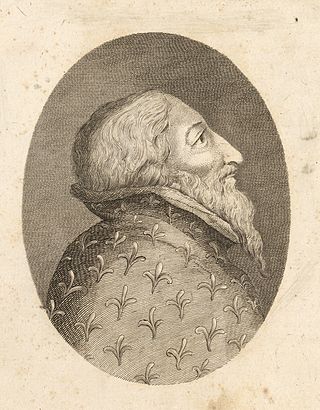
Henry Percy, 1st Earl of Northumberland, 4th Baron Percy, titular King of Mann, KG, Lord Marshal was the son of Henry de Percy, 3rd Baron Percy, and a descendant of Henry III of England. His mother was Mary of Lancaster, daughter of Henry, 3rd Earl of Lancaster, son of Edmund, Earl of Leicester and Lancaster, who was the son of Henry III.
Henry Percy, 2nd Earl of Northumberland was an English nobleman and military commander in the lead up to the Wars of the Roses. He was the son of Henry "Hotspur" Percy, and the grandson of Henry Percy, 1st Earl of Northumberland. His father and grandfather were killed in different rebellions against Henry IV in 1403 and 1408 respectively, and the young Henry spent his minority in exile in Scotland. Only after the death of Henry IV in 1413 was he reconciled with the Crown, and in 1414 he was created Earl of Northumberland.
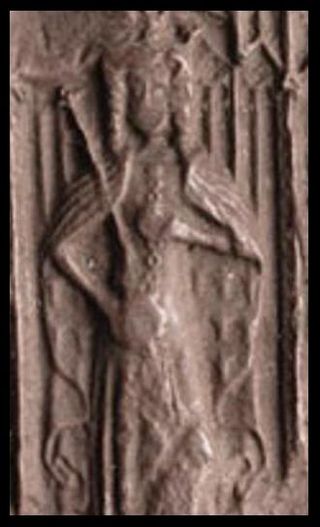
Murdoch Stewart, Duke of Albany was a leading Scottish nobleman, the son of Robert Stewart, Duke of Albany, and the grandson of King Robert II of Scotland, who founded the Stewart dynasty. In 1389, he became Justiciar North of the Forth. In 1402, he was captured at the Battle of Homildon Hill and would spend 12 years in captivity in England.
Sir James Douglas, 2nd Earl of Douglas and Mar was an influential and powerful magnate in the Kingdom of Scotland.

The Lord Warden of the Marches was an office in the governments of Scotland and England. The holders were responsible for the security of the border between the two nations, and often took part in military action. They were also responsible, along with 'Conservators of the truce', for administering the special type of border law known as March law.
The Battle of Nesbit Moor was a small but significant clash between Scottish and English forces in the borders area north of the River Tweed. Specifically this clash took place on the Kimmerghame Estate in a field now named Slaughter Field. The estate is in the possession of the Swinton Family.

The Battle of Otterburn took place according to Scottish sources on 5 August 1388, or 19 August according to English sources, as part of the continuing border skirmishes between the Scots and English.
This timeline summarises significant events in the history of Northumbria and Northumberland.
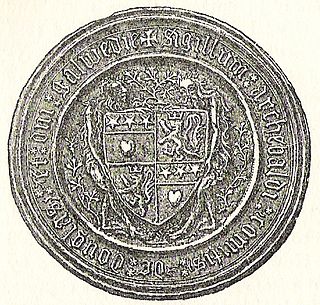
Archibald Douglas, 4th Earl of Douglas, Duke of Touraine, was a Scottish nobleman and warlord. He is sometimes given the epithet "Tyneman", but this may be a reference to his great-uncle Sir Archibald Douglas.

Sir William Douglas "le Hardi", Lord of Douglas was a Scottish nobleman and soldier.
George Douglas, 1st Earl of Angus (1380–1403) was a Scottish nobleman and peer.
William Douglas, 2nd Earl of Angus was a Scottish nobleman and soldier. The son of George Douglas, 1st Earl of Angus and Princess Mary of Scotland, he was a grandson of King Robert III.
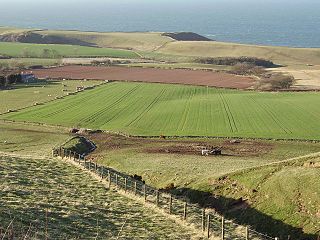
The Battle of Piperdean was an engagement in the Scottish Borders, fought on 10 September 1435 between the Kingdom of Scotland and the Kingdom of England.
George de Dunbar, 11th Earl of Dunbar & March, 13th Lord of Annandale, and Lord of the Isle of Man, was the last of his family to hold these titles.
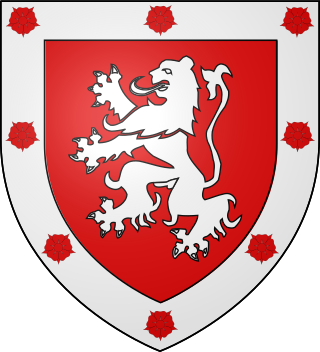
George de Dunbar, 10th Earl of Dunbar and March (1338–1422), 12th Lord of Annandale and Lord of the Isle of Man, was "one of the most powerful nobles in Scotland of his time, and the rival of the Douglases."
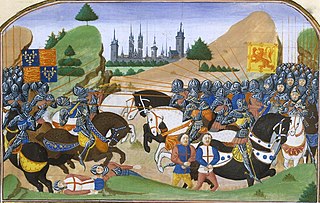
The Battle of Sark, alternatively called the Battle of Lochmaben Stone, was fought between England and Scotland in October 1448. A large battle, it was the first significant Scottish victory over the English in over half a century, since the Battle of Otterburn in 1388. It placed the Scots in a position of strength against the English for over a decade, until Edward IV ascended the English throne, and it brought the powerful Douglas family to even greater prominence in Scotland.

Sir John Swinton, 14th of that Ilk, great-grandson of Henry de Swinton who appears on the Ragman Roll, was a distinguished soldier and statesman in the reigns of Robert II of Scotland and Robert III of Scotland.

The Cheviot Hills, or sometimes The Cheviots, are a range of uplands straddling the Anglo-Scottish border between Northumberland and the Scottish Borders. The English section is within the Northumberland National Park. The range includes The Cheviot, plus Hedgehope Hill to the east, Windy Gyle to the west, and Cushat Law and Bloodybush Edge to the south.
Sir Adam de Gordon, Lord of Gordon was a 14th-century Scottish baron.












